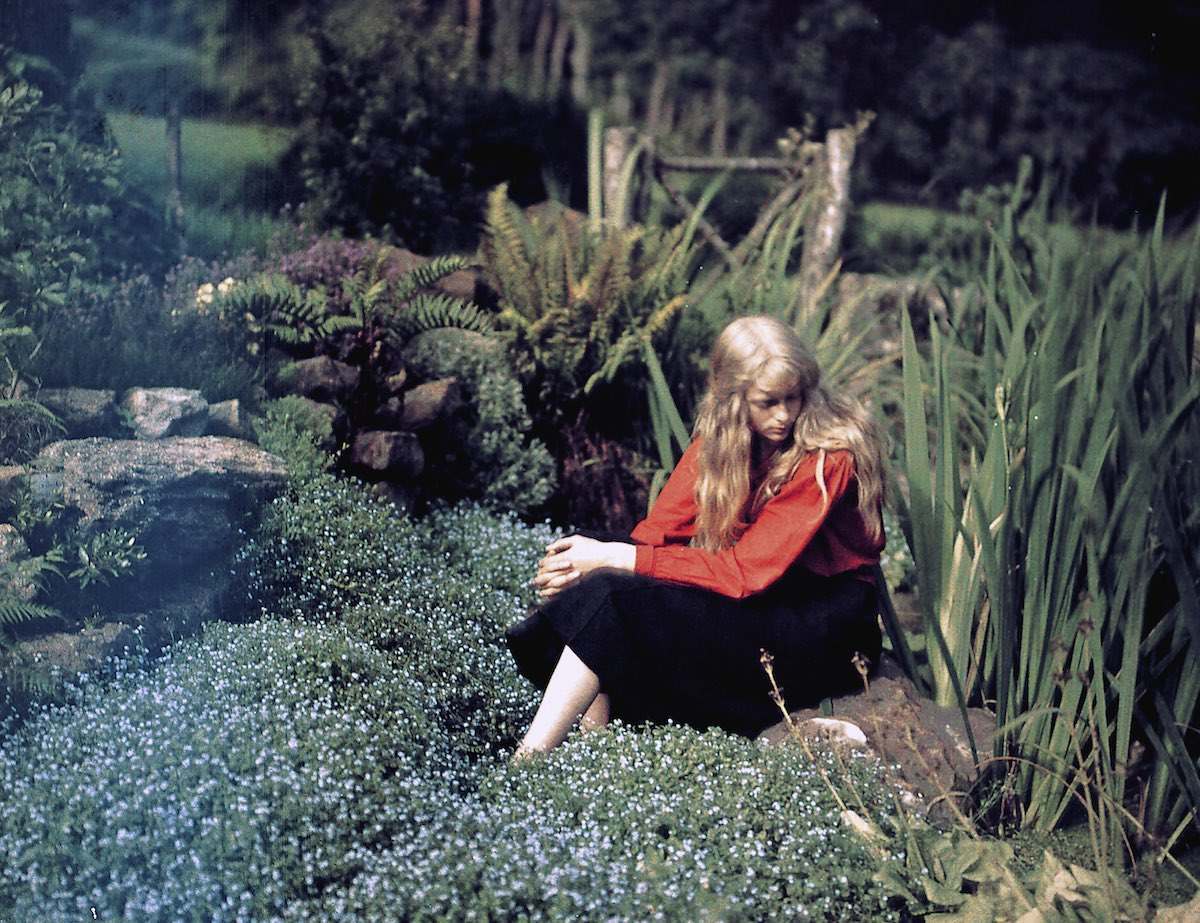These are early colour photographs, taken in 1913, by British engineer Mervyn O’Gorman of his daughter Christina. The venue is Lulworth Cove in Dorset. Everything about them is sensational.

A dramatic and comparatively unusual close-up portrait of Christina. The large aperture setting has reduced the background to near abstraction and the lack of any obvious period references gives this image a remarkably modern feel.
Mervyn Joseph Pius O’Gorman CB (19 December 1871 – 16 March 1958) was a pioneer in color photography. A skilled electrical engineer who exprimented with celluloid and became Superintendent of the Royal Balloon Factory at Farnborough, O’Gorman developed a keen eye for light, color and movement.
O’Gorman’s pictures of his daughter Christina epitomise the Lumière brothers’ Autochrome process.
The technology and O’Gorman’s talent transform Christina’s red cloak and swimsuit into things magical and hyper-real.
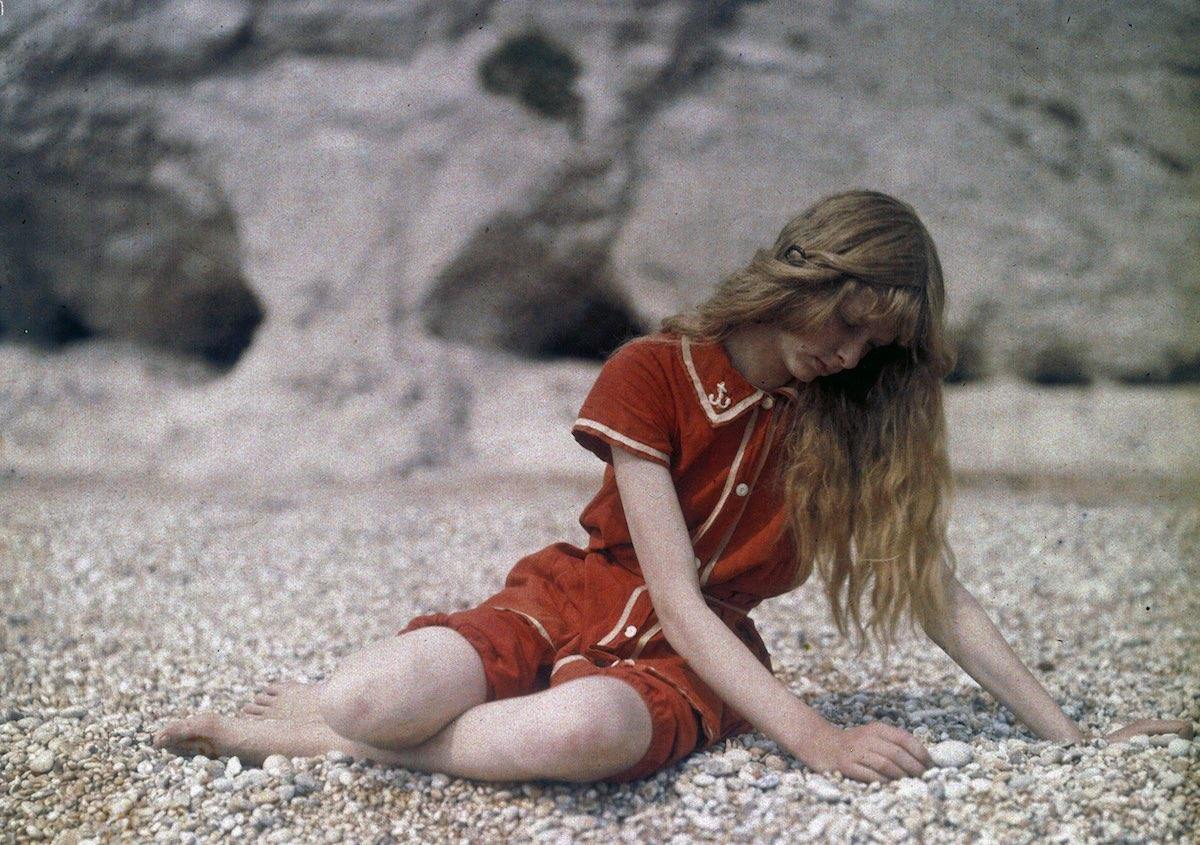
July 13 1913 Christina O’Gorman, photographed by her father at Lulworth Cove, Dorset, England. Christina’s choice of swimming costume was a fortuitous one since red was a colour which the Autochrome process captured particularly well.
The National Media Museum has more:
The manufacture of Autochrome plates, undertaken at the Lumière factory in Lyon, was a complex industrial process. First, transparent starch grains were passed through a series of sieves to isolate grains between ten and fifteen microns (thousandths of a millimetre) in diameter. Many different types of starch were tried, but the humble potato was found to give the best results. These microscopic starch grains were separated into batches, dyed red, green and blue-violet, mixed together and then spread over a glass plate coated with a sticky varnish. Next, carbon black (charcoal powder) was spread over the plate to fill in any gaps between the coloured starch grains. A roller submitted the plate to a pressure of five tons per square centimetre in order to spread the grains and flatten them out. On every square inch of the surface of an Autochrome plate there are about four million transparent starch grains, each one of which acts as a tiny coloured filter. Finally, the plate was coated with a panchromatic photographic emulsion…
Photographers could use their existing cameras… Exposures were made through a yellow filter which corrected the excessive blue sensitivity of the emulsion and gave a more accurate colour rendering. This, combined with the light-filtering effect of the dyed starch grains, meant that exposure times were very long – about thirty times that of monochrome plates. It was not until October 1907 that the first, eagerly awaited, consignment of plates went on sale in Britain. By 1913, the Lumière factory was making 6,000 Autochrome plates a day, in a range of different sizes.

O’Gorman captures a timeless scene as his family eat their picnic on the beach in Dorset, with Durdle Door in the background. In 1897 O’Gorman had married Florence Rasch, who is sitting between their two daughters. O’Gorman’s camera case can be seen close by. One of the great advantages of the process was that it didn’t require special apparatus – photographers could use Autochrome plates in their existing cameras.

A portrait of Christina, gazing thoughtfully into an ornamental pond. The location for this photograph is not known but may possibly be the gardens of Rempstone Hall near Corfe Castle in Dorset.

A dramatic and comparatively unusual close-up portrait of Christina. The large aperture setting has reduced the background to near abstraction and the lack of any obvious period references gives this image a remarkably modern feel.
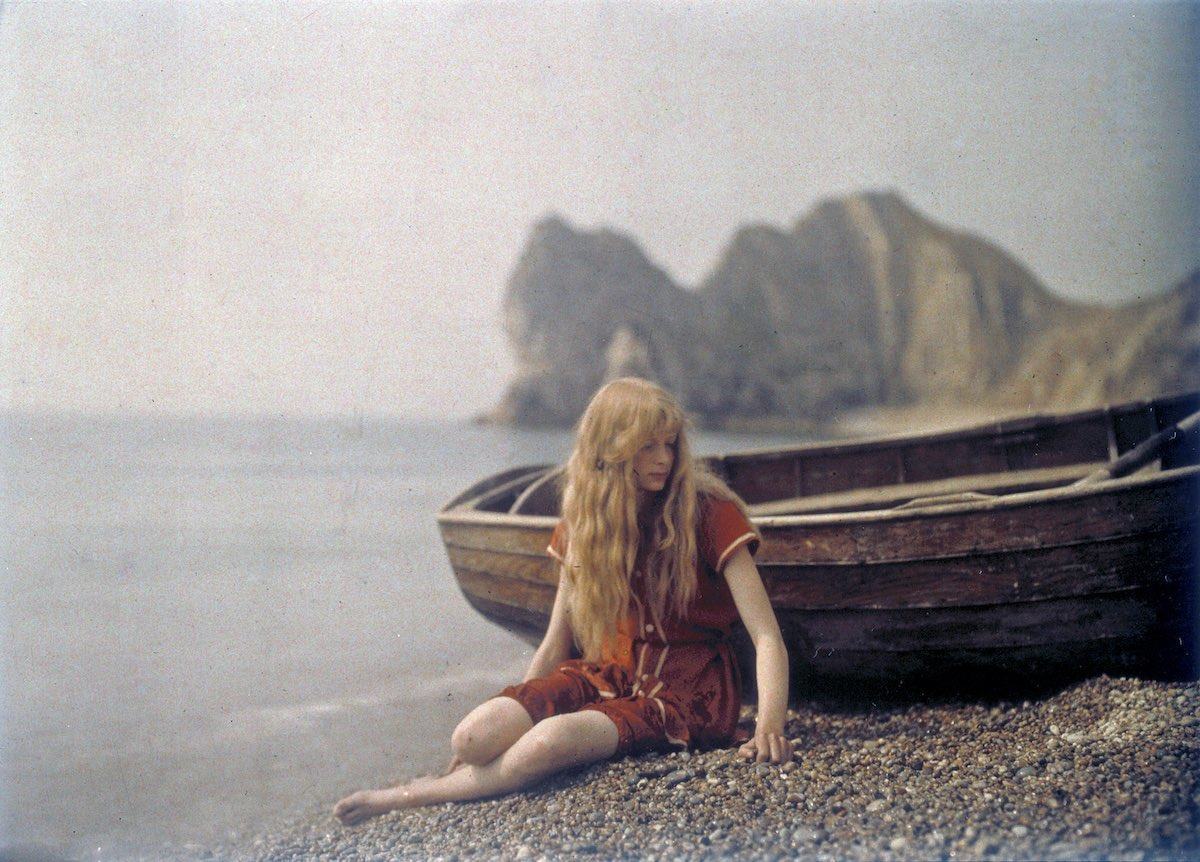
Christina, taken on the beach at Lulworth Cove, Dorset. The comparatively long exposure time has given the sea a glassy quality and the large aperture setting and narrow depth of field has put Durdle Door in the background into soft focus.

July 13 1913 Christina O’Gorman, photographed by her father at Lulworth Cove, Dorset, England. Christina’s choice of swimming costume was a fortuitous one since red was a colour which the Autochrome process captured particularly well.
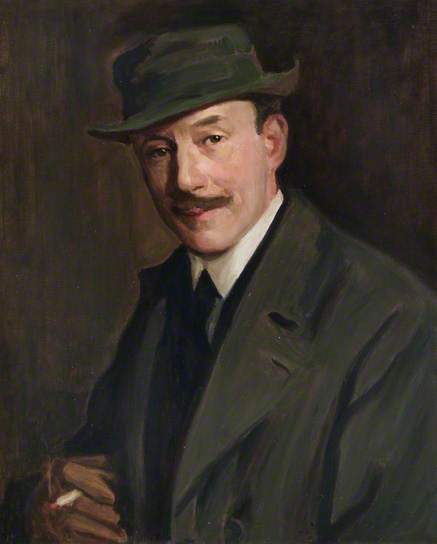
Lieutenant Colonel Mervyn O’Gorman, CB
by M. Boss. Royal Air Force Museum; Supplied by The Public Catalogue Foundation
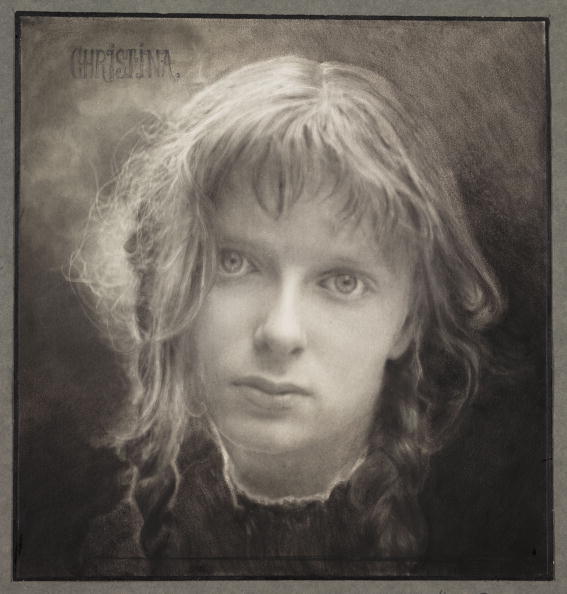
Photography by Lieutenant-Colonel Mervyn O’Gorman who had a distinguished career in the aeronautics and autoomotive industries as well as enough time to master photography. This portrait is probably of his daughter Christina. (Photo by SSPL/Getty Images)
Would you like to support Flashbak?
Please consider making a donation to our site. We don't want to rely on ads to bring you the best of visual culture. You can also support us by signing up to our Mailing List. And you can also follow us on Facebook, Instagram and Twitter. For great art and culture delivered to your door, visit our shop.


